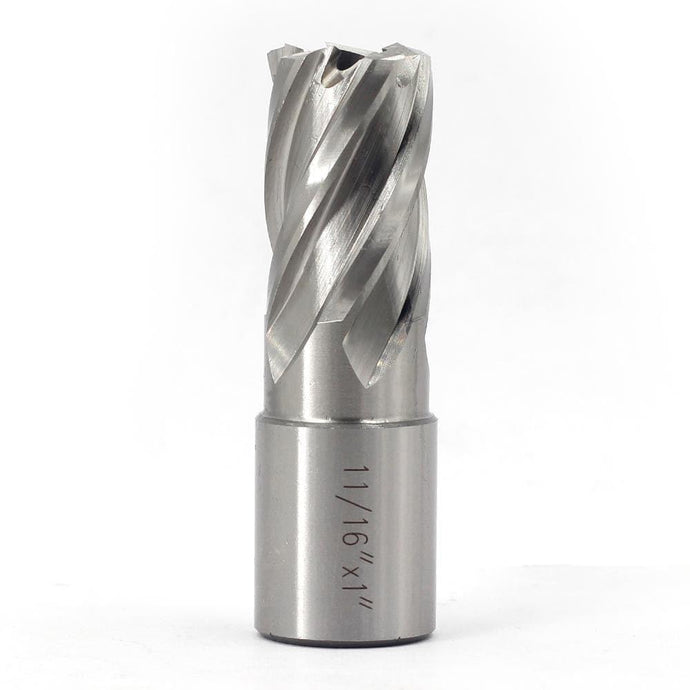The Power and Precision of the Annular Cutter Drill: Revolutionizing Hole Making
When it comes to drilling precise, clean holes in metal and other tough materials, the traditional twist drill bit has long been the go-to tool for many industries. However, while effective for smaller applications, standard drills can struggle with larger hole sizes, producing rough edges, excessive heat, and requiring multiple passes. Enter the annular cutter drill - a revolutionary tool that is reshaping how professionals approach hole-making in heavy-duty materials. The annular cutter drill, designed to make larger, more accurate holes with less heat and minimal material waste, is becoming an indispensable asset in many workshops, from automotive to manufacturing to construction.
The annular cutter drill operates on a simple yet highly effective principle. Unlike conventional drill bits that cut material from the center of the hole, an annular cutter works by removing material from the outer circumference, leaving a solid core or slug in the center. This design is key to its performance, as it reduces the amount of material being cut at once, allowing for a more controlled and efficient cutting process. By cutting around the perimeter, the tool creates a smooth, clean hole with significantly reduced friction and heat generation, which translates into longer tool life and faster work rates.
One of the key advantages of the annular cutter drill is its ability to drill large-diameter holes with high precision and minimal effort. Traditional twist drills require a series of smaller steps - often starting with a pilot hole - before reaching the desired hole size. This can be time-consuming, inefficient, and produce more heat, which may cause tool wear or damage to the workpiece. With an annular cutter drill, however, the tool can perform a single-pass operation, making the entire hole in one go. This not only increases productivity by reducing the number of steps but also minimizes the likelihood of misalignment or inaccuracies, resulting in a cleaner finish that often requires little to no additional finishing work.
The design of the annular cutter also provides distinct benefits when it comes to material waste. Since the cutter works by shearing around the edges of the hole and leaving a slug in the center, there is far less material loss compared to traditional drilling methods. The slug itself is often ejected automatically, allowing the operator to work efficiently without having to manually remove the waste material after each cut. In many industries, particularly those focused on precision machining, the ability to conserve material can lead to significant cost savings, especially when working with expensive or specialty metals.
Another notable feature of the annular cutter drill is its versatility in terms of material compatibility. While they are commonly used in metalworking, annular cutters can be employed across a wide range of materials, including steel, stainless steel, aluminum, plastics, and composites. Whether you're drilling through tough alloys or softer materials, the annular cutter's ability to maintain a sharp cutting edge and produce high-quality results makes it a valuable tool for many different tasks. Furthermore, because these cutters are available in a range of coatings - such as carbide, cobalt, or titanium nitride (TiN) - they can be adapted to meet the specific demands of the job, providing even greater durability and efficiency when working with harder materials or tougher applications.
Using an annular cutter drill requires a specific setup that generally involves a magnetic drill press or a radial drill machine, as these tools offer the necessary stability and precision for annular cutter operation. Magnetic drill presses, in particular, are designed to attach securely to metal surfaces, providing a firm base for the cutting process. This feature ensures that the annular cutter drills precisely through the material without the risk of slipping or misalignment. The magnetic base is an especially helpful feature when working on vertical surfaces or in confined spaces, making the annular cutter drill a versatile choice for a wide range of industrial applications.
Despite its many advantages, using an annular cutter drill does require careful attention to cutting speeds and feeds. Because these cutters are designed to cut through tough materials, selecting the correct speed and feed rate is essential for optimal performance. Going too fast can cause the tool to overheat, while too slow a speed may reduce cutting efficiency. The key is to strike a balance that ensures smooth, efficient cuts without causing undue stress on the tool or the material. Additionally, coolant and lubrication are often used to help dissipate heat and ensure smoother cutting, especially when working with metals that are prone to heat buildup.
Maintenance of the annular cutter drill is relatively simple but crucial for maintaining its effectiveness over time. Regular inspection of the tool for wear and tear, especially on the cutting edges, is necessary to ensure that it continues to perform at its best. Replacing worn-out cutters or re-sharpening them can keep the tool in peak condition, ensuring consistent results. The long lifespan of annular cutters, combined with their efficiency and precision, makes them a cost-effective choice for high-volume drilling operations.
In industries that require precision, speed, and efficiency, the annular cutter drill is quickly becoming a preferred tool for cutting larger, cleaner holes. Whether you're drilling holes for bolts, dowels, or other fasteners, or you're working on custom fabrication or machining tasks, the annular cutter drill delivers consistently high-quality results with minimal effort and material waste. With the right setup and proper care, the annular cutter can significantly improve productivity, reduce costs, and enhance the overall quality of the work. As manufacturing processes evolve and demands for greater precision continue to rise, the annular cutter drill is set to play an even more pivotal role in shaping the future of metalworking and beyond.

